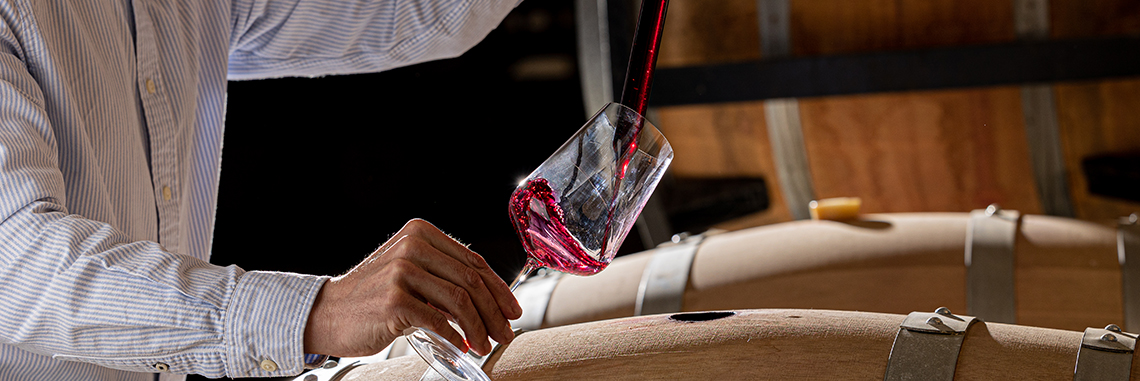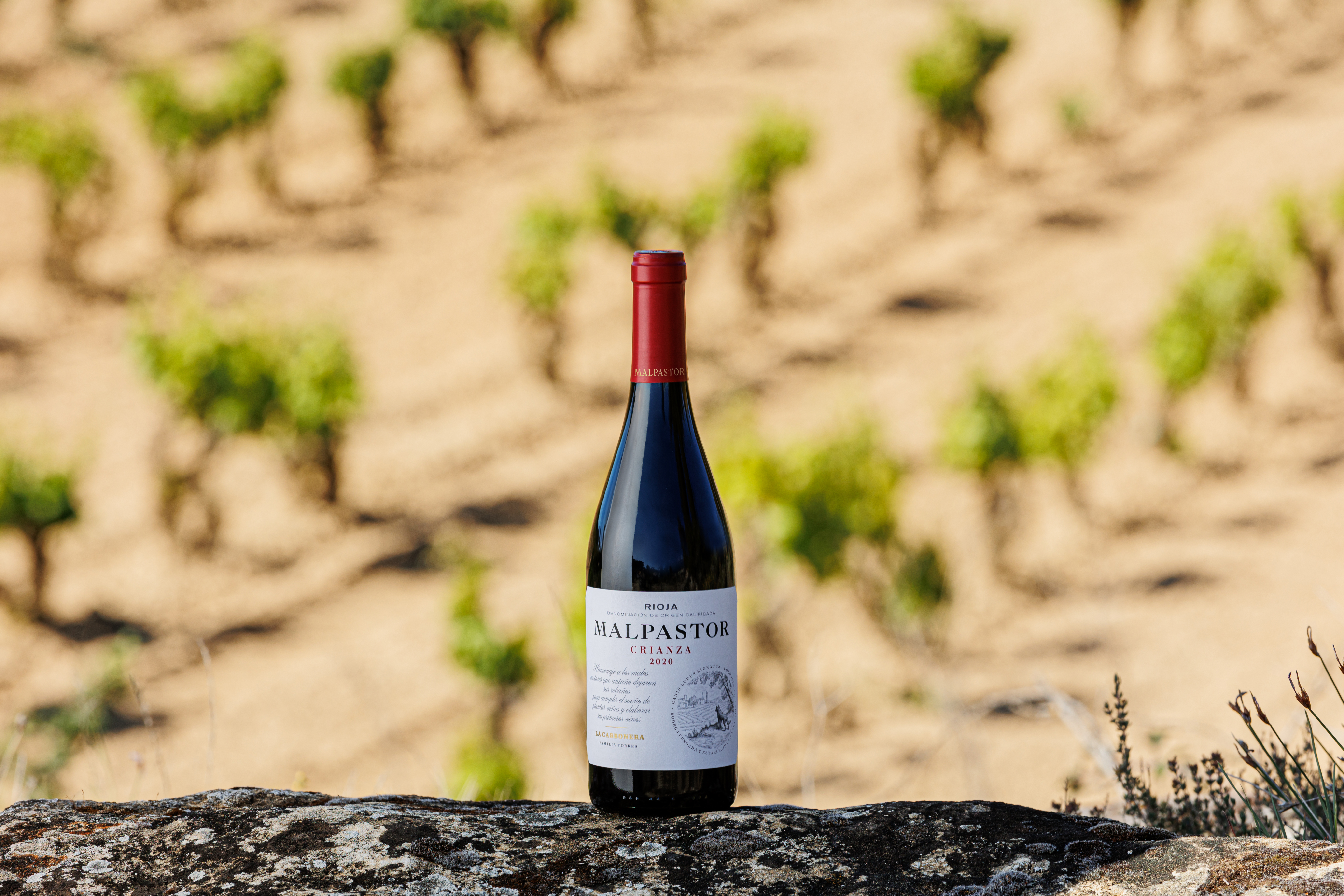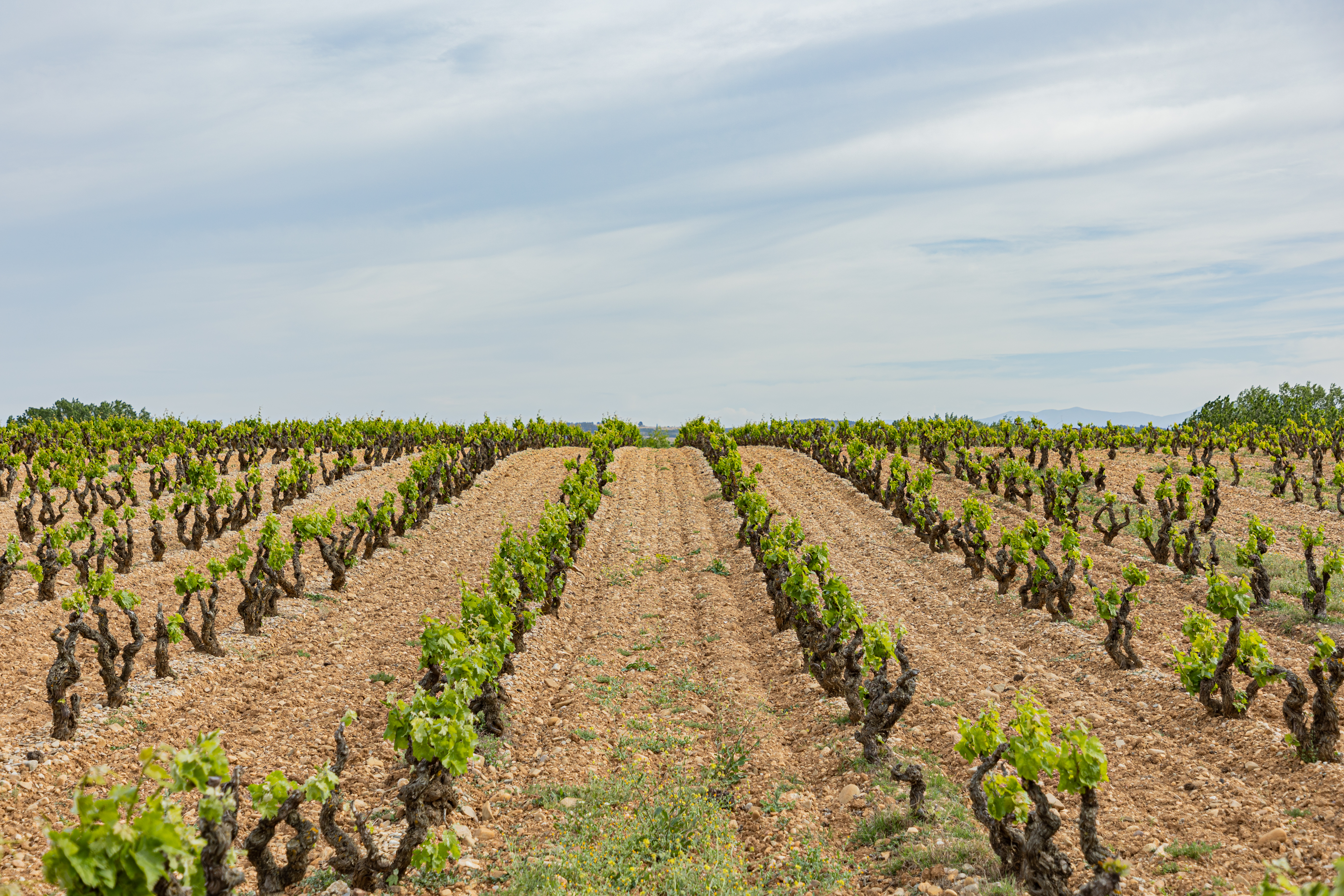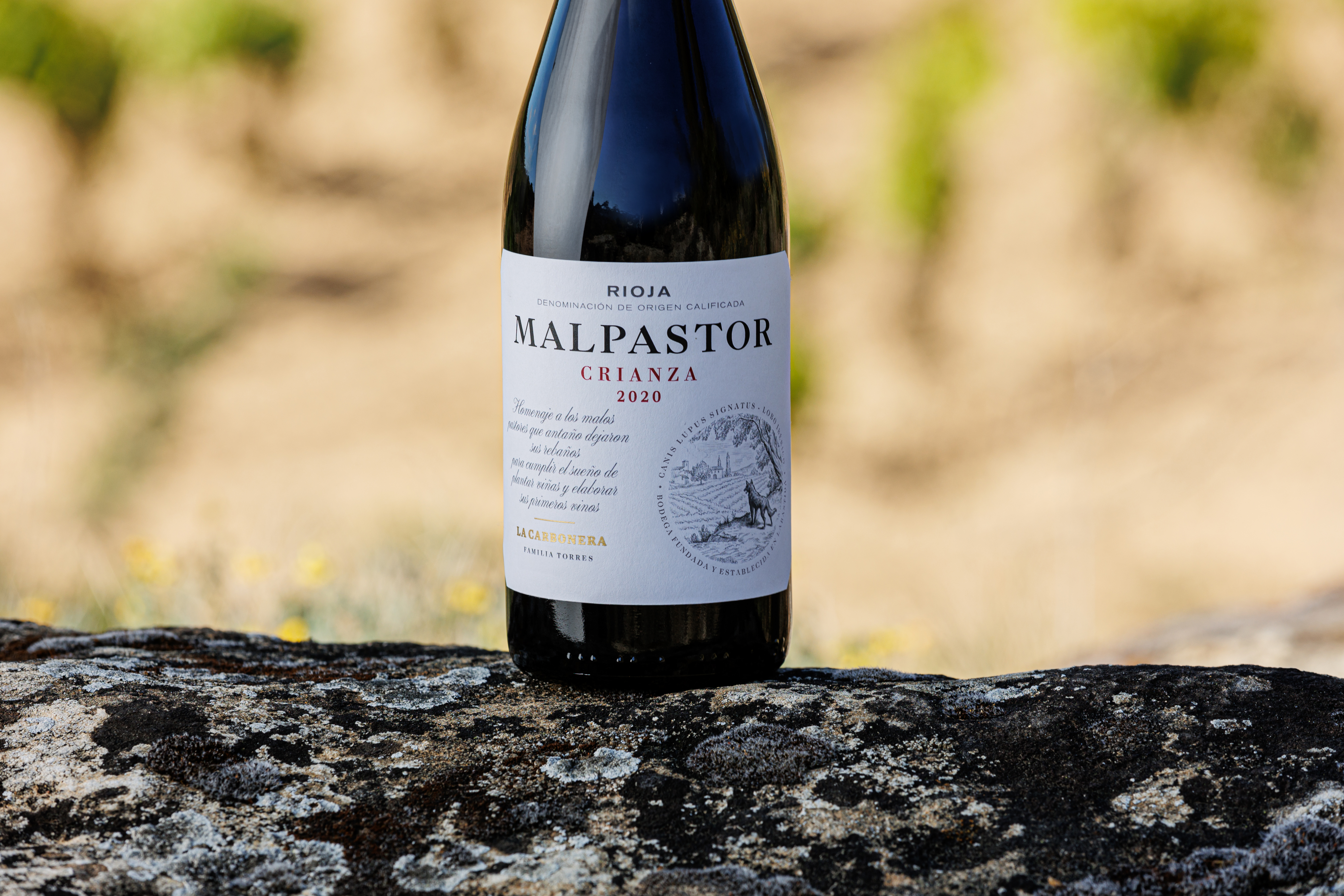[NEW] MALPASTOR – DOCa RIOJA

A New Member Joins the Familia Torres family
La Carbonera reflects Familia Torres’s firm commitment to Rioja Alavesa, and more specifically Labastida. With a focus on provenance and typicity, the family’s Rioja winery strives to produce unique wines which express the landscape of this historic region.
“Malpastor is a wine that pays tribute to the origins of Tempranillo in La Rioja, as well as everything that has been learned since. In this el-egant wine, typicity meets modernity, and varietal fruit aromas com-bine harmoniously with subtle oak.”
Julio Carreter, vinemaker at La Carbonera winery

Malpastor, a Familia Torres property, with its vineyards of origin in the background
La Sonsierra, the journey from shepherds to winegrowers
La Sonsierra is a mountainous region that extends along the south of Álava prov-ince, in northern La Rioja and southwestern Navarra, an area that includes Rioja Alavesa and parts of Rioja Alta. At its northern end, the region meets the steep rock-faces of the Sierra de Cantabria and the Toloño mountains; to the south, it is bor-dered by the Ebro River. In the foothills of the Sierra, the predominant soils consist of very poor grey-brown limestone that developed over Miocene marl, limestone, and sandstone.
The earliest inhabitants were tribes of herds-people who lived in the area 4700 years ago. The standing stones and megalithic structures scattered throughout the area are an enduring testament to their existence.

Vineyards in DOCa Rioja, the birthplace of Malpastor
Centuries later, during the Roman Empire, some shepherds gave up their trade to become winegrowers, displaying the courage to try something different. This is where the wine Malpastor (“bad shep-herd”) gets its name – a nod to the shepherds who abandoned their flocks to embrace winegrowing instead.
La Rioja
Geographically, the DOCa Rioja wine region stretches across La Rioja, southern Álava, and part of Navarra. A slice of heaven on earth, with the Ebro River and seven of its tributaries running across it from west to east, carving out valleys ideally suited for winegrowing.
Once a land of wild grapevines, La Rioja became a viticultural en-clave under Roman rule, acquiring, over time, a Bordeaux-influenced winemaking tradition.
Rioja reds are refined, elegant, and velvety; clean wines that open up beautifully when decanted. The reason for this can be found in the pedological (pedology is the study of nature and soil conditions in relation to plants) and climatic conditions, less extreme than in other areas, more tempered and moderate. The wines stand out for their delicate tannins and their colour, ranging from the vermillion of young wines to the ruby red of Crianzas to the brick red of Gran Reservas.
The Variety
Let’s take a brief historical look at the Tempranillo grape: studies into its genetic makeup have identified its place of origin as the Ebro Valley, where thousands of years ago a crossing between the varieties Albillo Mayor and Benedicto produced a new grape.
The name Tempranillo (which means “the early one”) refers to its short ripening cy-cle. The vines produce big compact clusters with thick-skinned grapes – small, per-fectly round berries of an almost unearthly beauty.
The grapes produce aromatic, fruity wines, pleasant and not too alcoholic, versa-tile, with firm yet delicate tannins. In warmer areas, echoes of black forest fruit and plums step into the foreground. In milder areas, the black fruit notes turn red, pro-ducing wines of a beautiful ruby red hue.
The Name
Malpastor recalls the first shepherds who began growing grapes, often abandon-ing their flock in the process. These adventurous pioneers were often called “malos pastores” or “bad shepherds”.

Malpastor, a Familia Torres property, is made from Tempranillo grapes
Winemaking
In its melding of typicity and innovation, Malpastor exemplifies modern Rioja wines. This Tempranillo varietal is made from handpicked grapes from 20 to 25-year-old vines that grow on gentle hillsides and small limestone soil terraces. Malpastor is lees-aged for one month in concrete vats and three months in French and American oak barrels, where it then completes its maturation for a period of up to 12 months. After bottling, the wine spends a minimum of six months in the cellar, where its velve-ty and silky sensations are refined and defined to achieve its distinctive palate.
The Tasting
The resulting wine is intense and fragrant, with exquisite fruit and spice aromas and notes reminiscent of toast bread. Velvety, succu-lent tannins subtly defined by oak ageing. Mature on the palate, with good body and acidity; a full, round wine. A modern Rioja, versatile, with well-integrated subtle oak that doesn’t stand out but defines and accentuates the varietal profile.
DOCa Rioja wines owe their stellar reputation to a series of geographical, topo-graphical, historical, and cultural factors, which Familia Torres is proud to carry into the future. With wines like Malpastor, the Rioja wine region speaks to the world from a place of new ideas and innovation.
